|
In Britain, the first
of May is celebrated in all sorts of interesting ways, like dancing
around a Maypole, crowning a May queen, dancing Morris dances,
and toasting the Green Man. The Green Man is a half-man, half-plant
Celtic mythical figure. He sometimes shows up as an ornamental
motif in British architecture: your typical guy with a vine growing
out of his mouth or with leaves instead of hair. He's kinda like
the Jolly Green Giant, only not as jolly or as giant.
When I got up that
day, I didn't look green at all. My hair wasn't very leafy, either,
but it did look like it was growing every which way. So I guess
the spirit of the Green Man was with me a little.
Since I'm
not British, I decided to celebrate the first of May in a different
way: by taking a trip to Iona Beach to look for a Vesper Sparrow
that had been reported there. I
had a bite to eat, and then grabbed my tripod and knapsack containing
my extra lenses and headed down to my car. Just before gettting
to the car, however, I realized that the things I was carrying
would be more useful if I actually brought my camera along. So
I went back to my suite for the camera.
When I arrived at Iona,
I found my friend Ilya already there looking for the Vesper Sparrow,
which was unexpected but not unusual. He's not very green, and
is often to be found where interesting birds have been reported.
Ilya was going to meet with Jeff, another non-green fellow he
often birds with.
Neither of us found
the Vesper, and Jeff soon arrived. We walked the length of the
treatment ponds, just to see what was around. There were a few
Cinnamon Teals, like the fellow who's landing here.
|
|
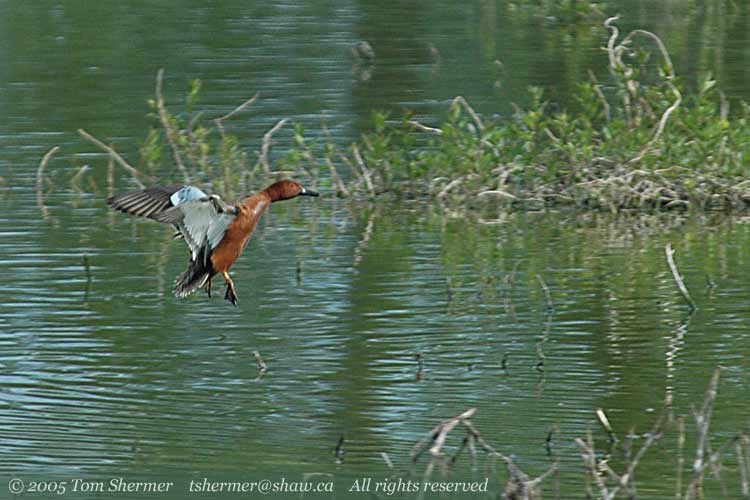 |
| There were
some shorebirds hanging about in the shallows, like this Lesser
Yellowlegs. |
|
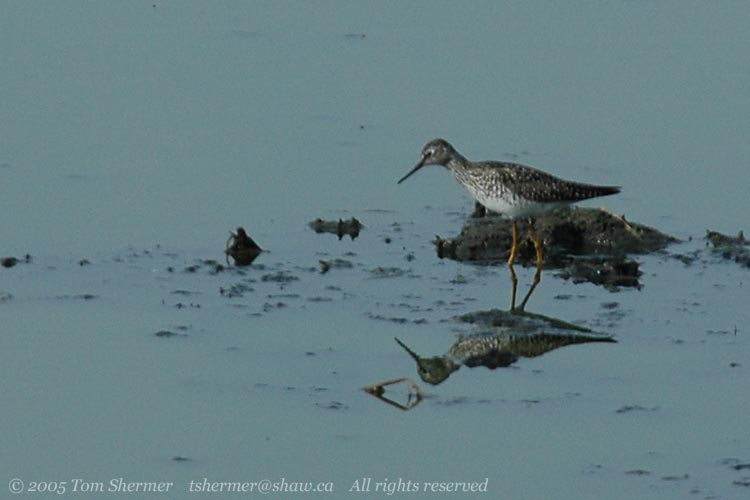 |
| And here's
a Killdeer that was nearby. |
|
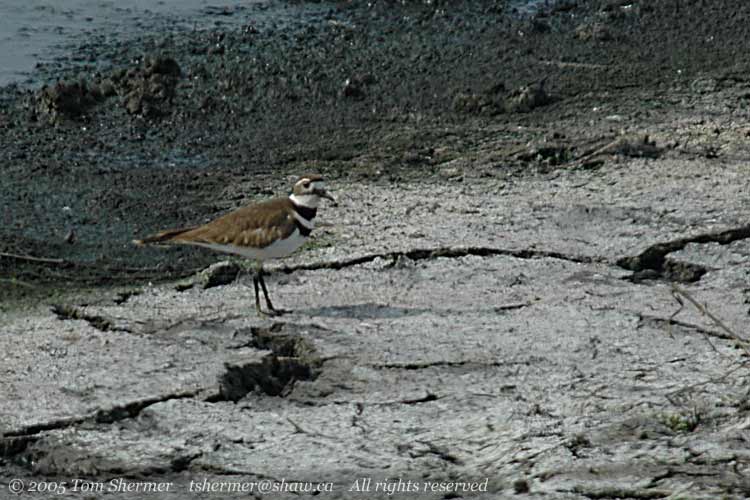 |
| There were
a few different species of ducks on the ponds. Aside from the aforementioned
Cinnamon Teals, there were Mallards, Gadwall, a Ruddy Duck, and
some Northern Shovelers. I got some decent shots of the Shovelers—this
one is a male (and he's somewhat green). |
|
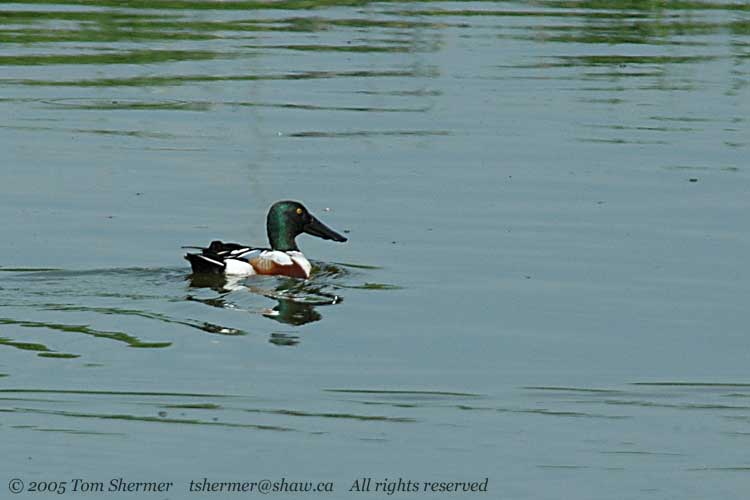 |
|
And this one is a female.
I would say that I'm impressed by the size of their bills,
but really I'm depressed by them. They always remind me
of my financial situation.
|
|
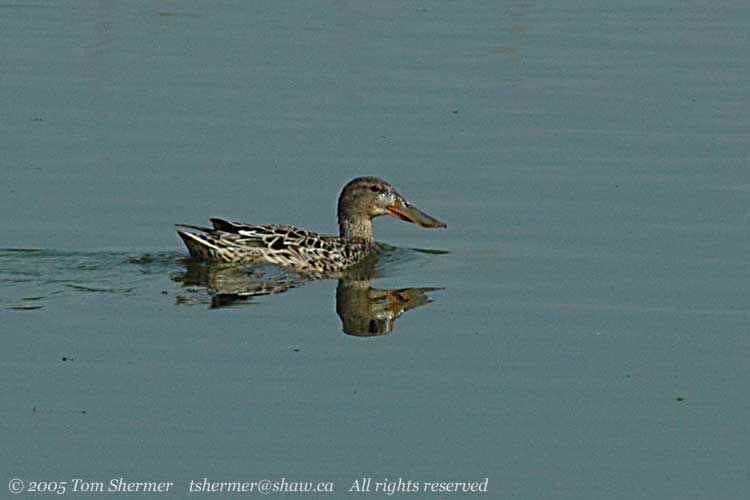 |
| There are
a lot of nest boxes at Iona that are used by Tree Swallows, so there's
always a pretty good population of them flying around. Here one
was kind enough to land and pose for the three of us. |
|
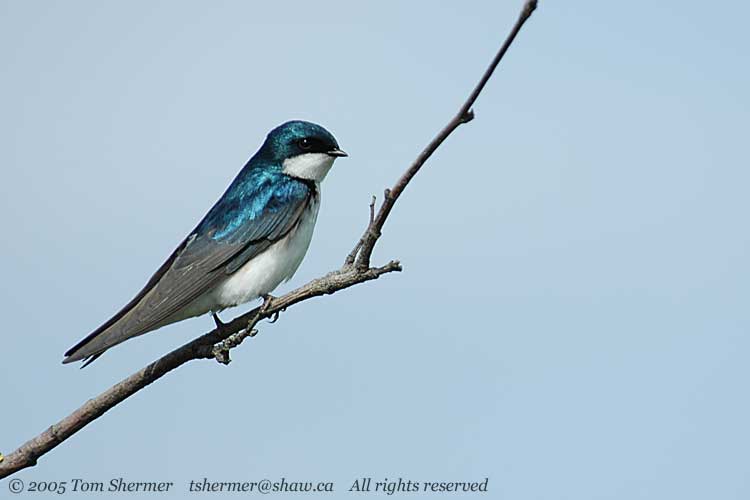 |
| Turning
our attention back to the ponds, we examined the shorebirds and
found some Western Sandpipers, like this one, |
|
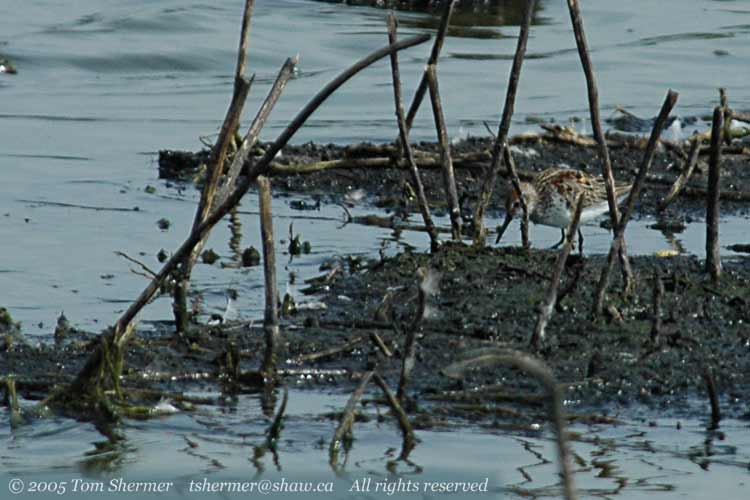 |
| and a single
Semipalmated Plover. The Semi Plover looks a lot like a Killdeer
except that it has only one dark band across its chest, where the
Killdeer has two (compare this guy with the Killdeer above). |
|
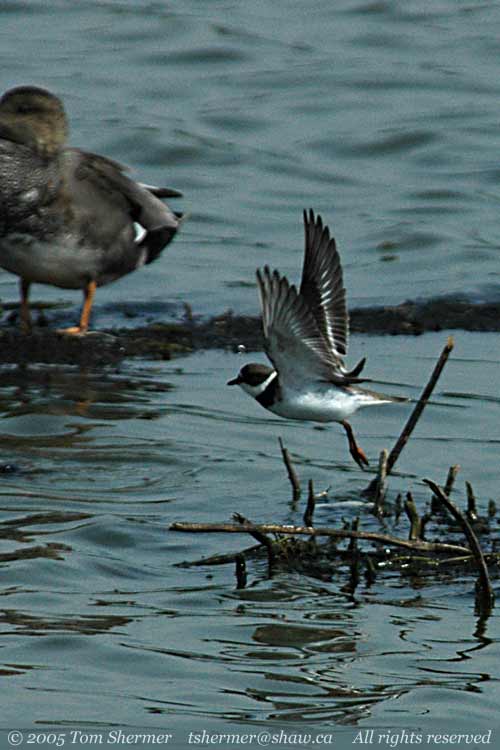 |
| The plover
was our last interesting bird at the treatment ponds. Ilya and Jeff
had planned to go over to Queen Elizabeth Park in Vancouver, and
I decided to join them in this venture. We caravanned over, arriving
at around 10:20. We looked for tanagers in the trees for a while
without any luck. I amused myself by taking some photos of a California
Darner that had decided to perch on some grass beside the path. |
|
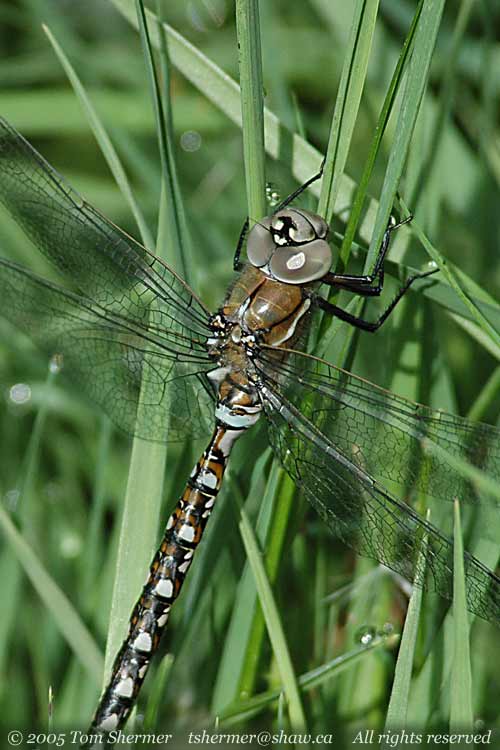 |
| We moved
on to the area below the large quarry garden, and found one of the
resident Cooper's Hawks up in a tree. I couldn't find a good spot
on his front side to take a photo; there were bushes in the way. |
|
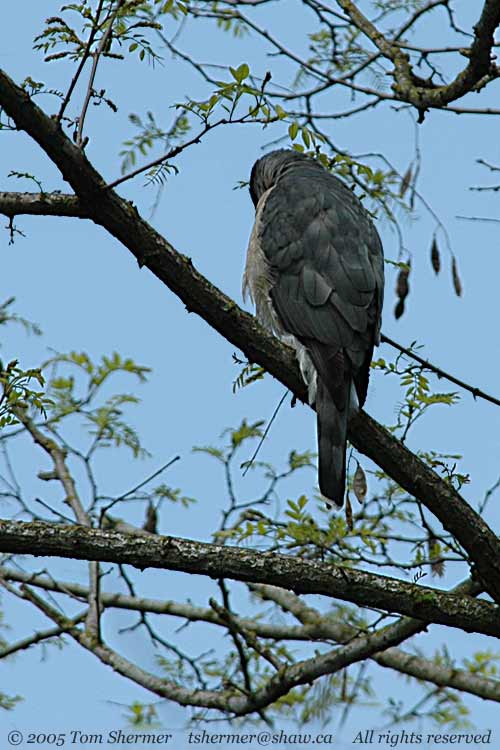 |
|
We were starting to
look for Wilson's Warblers when Ilya heard a flycatcher calling.
Ilya hears a lot better than Jeff and I do. Jeff said that hearing
aids really don't help much for hearing bird calls and song, because
they amplify the background noise too much. That's a bit of a
bummer because I was hoping that maybe they'd help; I have a lot
of high-frequency hearing loss and have known for some time that
I probably should be using hearing aids. I guess I might have
to resign myself to not being able to hear some of these little
beauties.
Anyhow, we followed
Ilya's ears (which, curiously enough, were going in the same direction
as the rest of his head) and eventually spotted the flycatcher
that was making the sounds. We thought that it was probably a
Pacific-slope Flycatcher, but we were not able to make a certain
identification.
|
|
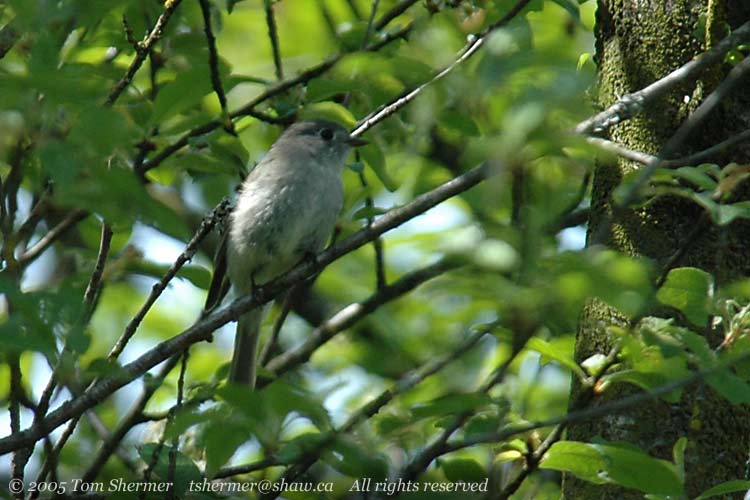 |
|
Many flycatchers look
very similar to one another and often voice is the best thing
for distinguishing between them. Ilya wasn't certain on the voice,
and Jeff and I were no help on that score.
Here's another view
of our bird.
|
|
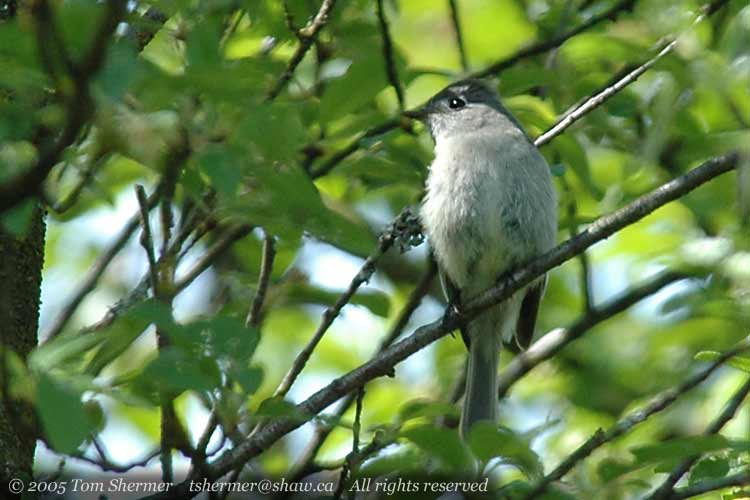 |
| We spent
an hour or so looking around in this general area, finding a few
warblers and another flycatcher (this one certainly a Pacific-slope)
but nothing that stayed put long enough for me to photograph. The
only thing that gave me a chance was this Mourning Cloak, which
I found while we were exploring the side of a hill. |
|
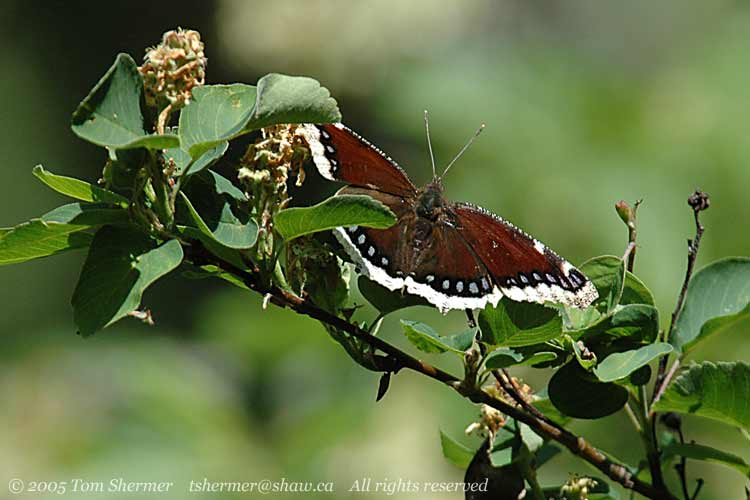 |
| Jeff and
Ilya decided to head on, but I stayed around, hoping to get shots
of some of the birds we had seen. I waited and watched, and my patience
was eventually rewarded. Here I caught a Townsend's Warbler hanging
out behind some leaves. |
|
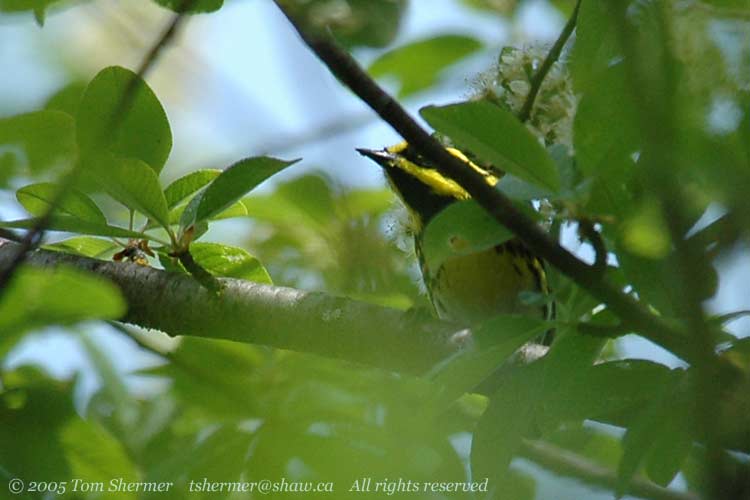 |
| And here
I got the Pacific-slope Flycatcher. The dense foliage was making
photography difficult. |
|
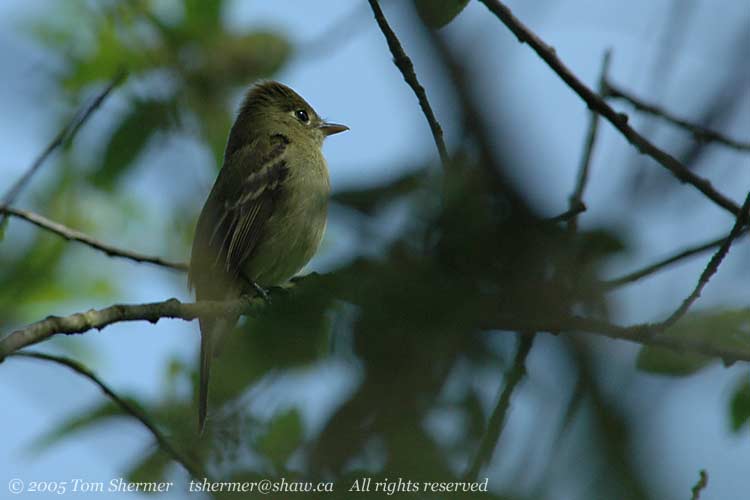 |
| While checking
out the bushes, I also found a few Hutton's Vireos . |
|
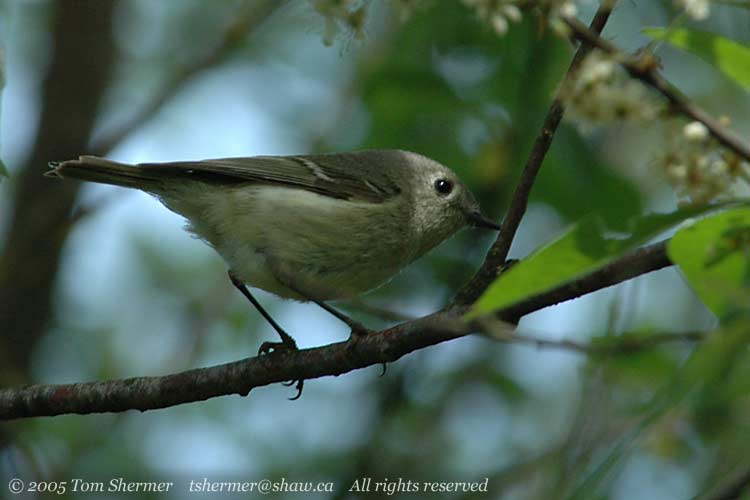 |
| I sat on
a nearby park bench and then noticed one of our resident long-legged
Crane Flies on a blade of grass. |
|
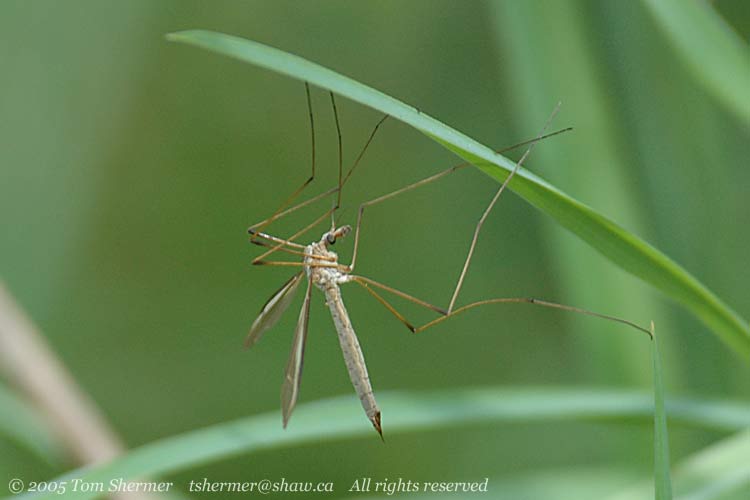 |
| After resting
a bit, I walked halfway around the main hill at the park, finding
several tulip beds that were in bloom. The colors were pretty exciting.
Here I got a bed of very red tulips, |
|
 |
| and here
I got a couple of pointy yellow ones. |
|
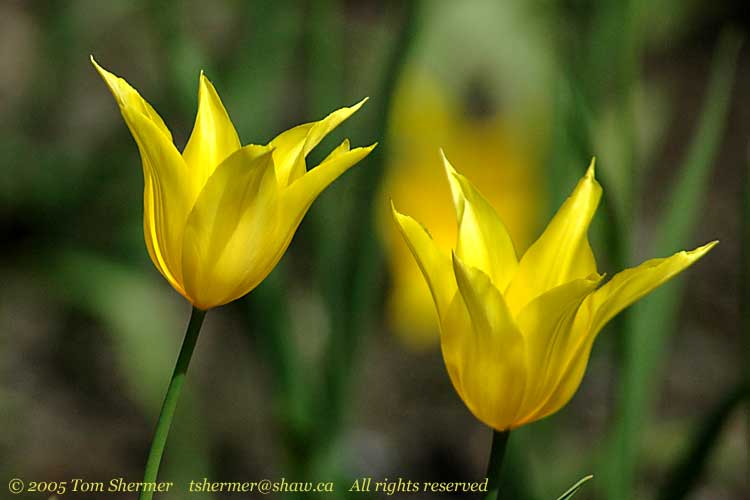 |
| As I walked
back to my car, I saw a small group of Rock Doves by a pond, and
several of them were the black morph, which I don't often see. I
quickly took some photos of them before any of the many other parkgoers
nearby scared them off. |
|
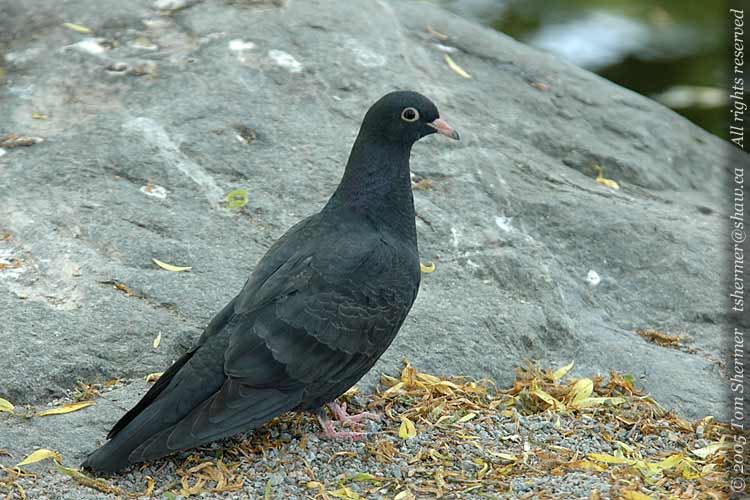 |
|
I got back to my car
at about 1:15 and that was it for photography that day. Next time
I'll bring you some fungus from the forest.
You know, it's easy
not being green.
Tom
|
|